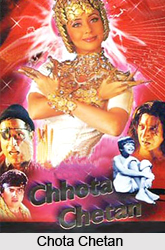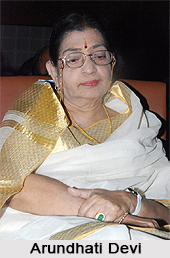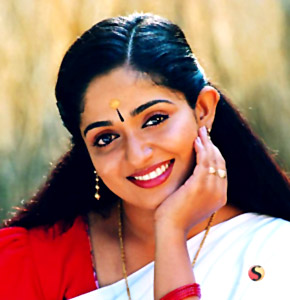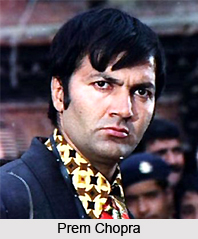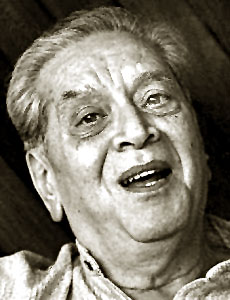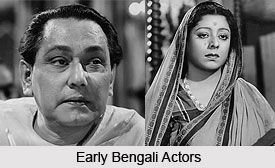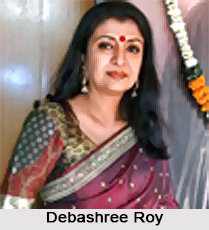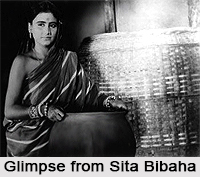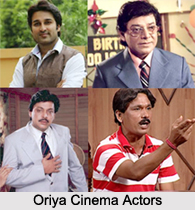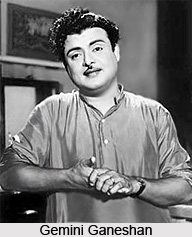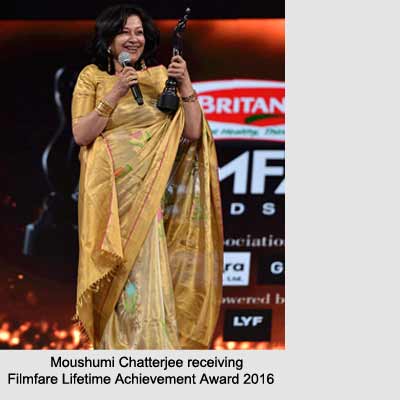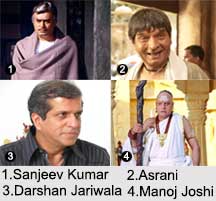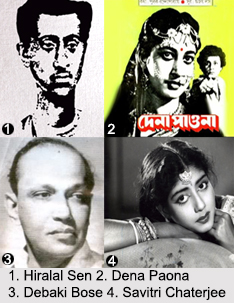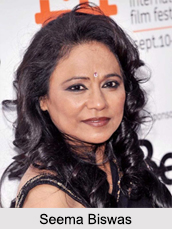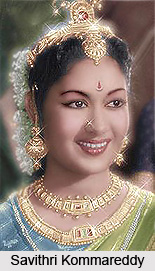Innovative roles of women in Indian films, especially mainstream cinema, are very few. However, some creative directors, working within the mainstream format, have given us some wonderful characters. Several Women Centric Films were made in the early days of Indian cinema. Strong female roles have also been witnessed in parallel cinema. Thus, several filmmakers right from the inception of Indian films, till date, have earnestly tried to portray women in a dignified, realistic, and an intriguing way and have succeeded considerably. Of the recent genre, many filmmakers have given us the best of such women centric films.
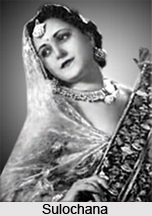 Sulochana (1907-83)
Sulochana (1907-83)
Sulochana, a former telephone operator, went on to become the highest paid actress of her day. Her finest period was with Imperial Studios where her on-screen pairing with Dinshaw Billimoria was especially popular. They were among the few stars to successfully transit to talkies. The most famous of her films, Wild Cat of Bombay, saw her in eight guises/characters including a gardener and a street brat. Her virtuosity knew no limits and she could have had no better vehicle for her talent. The sound films at Imperial were mainly remakes of her films, Wild Cat of Bombay (1927) was remade as Bambai Ki Billi (1936), Madhuri (1928) reappeared in sound in 1932, Anarkali (1928) was remade in 1935, and the hit film Indira BA (1929) became Indira MA (1934). Sulochana launched Rubi Pics in the mid 1930s which marked her retirement from acting. Ismail Merchant`s Mahatma and the Mad Boy (1974) included a tribute to this greatest of the silent screen stars.
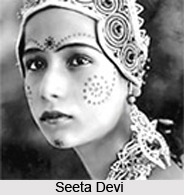 Seeta Devi (1912)
Seeta Devi (1912)
Born as Renee Smith, Seeta Devi became a star with Himansu Rai`s Prem Sanyas (1925), receiving accolades for her performance and bearing. Seeta Devi`s roles in Shiraz (1928) and Prapancha Pash (1929) established her firmly, but many continued to believe that she and her sister Percy Smith alternately appeared on screen as Seeta Devi.
Zubeida (1911-90)
Zubeida was the princess who became a star. She was the daughter of the Nawab of Sachin and Fatima Begum, actress and India`s first lady director. One of Zubeida`s sisters, Sultana, was also a star while the other, Shahzadi, appeared in films as a teenager. She commenced her acting career at Kohinoor Studios, at the age of 12. Her finest work was for Kohinoor and Laxmi studios, although she did freelance with other studios. She honed the role of the `pure` courtesan to perfection. Her limpid posture and soft uncertain voice became a tradition continued by Meena Kumari in Pakeezah (1971). Veer Abhimanyu (1922), Gul-e-Bakavali (1924), Indrasabha (1925) and the films directed by her mother Bulbul-e-Paristan (1926), Heer Ranjha (1928) and Milan Dinar are her finest performances. Zubeida played the lead in India`s first sound film Alam Ara (1931). In 1934 Zubeida, together with Nanubhai Vakil, launched Mahalakshmi Cinetone. By the late 30s, at the height of her stardom, she had retired, appearing in the rare films thereafter.
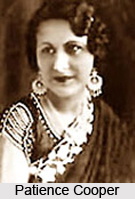 Patience Cooper (1905 -83)
Patience Cooper (1905 -83)
Cooper is credited with the first double roles of Indian cinema, as twin sisters in Patni Pratap and as mother and daughter in Kashmiri Sundari. She was a dancer with Bandman`s Musical Comedy before her contract with Madan Theatres. Her career followed a smooth pace and she remained at the top till dethroned by Sulochana. Her famous films are Nala Damayanti (1920), Dhruva Charitra (1921), Laila Majnu and Princess Budur (both in 1922), Bilwamangal and Alibaba and the Forty Thieves (both in 1932), Zehari Saap (1933), Khyber Pass (1936), and Iraada (1944). She was usually given the roles of innocent women troubled by the men of her lives. Cooper moreover had the colouring and sharp features that allowed the use of eye-level lighting, rarely used in India.
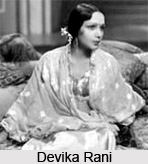 Devika Rani
Devika Rani
The icon of the Thirties and Forties, Devika Rani was the first `Dream Girl` and the first `First Lady` of the Indian Screen. This daughter of Colonel Choudhury, later Surgeon General Choudhury, and the grandniece of Rabindranath Tagore was one of the few truly charismatic stars of the world. Her career preference, architecture, led to her involvement with Himansu Rai`s film `A Throw of Dice` as set designer. They married in 1929 towards the end of the film`s shooting and the two proceeded to Germany in connection with the film. At UFA, she learned almost everything connected to film making, as well as the diverse and finer points of acting from the producer Max Reinhardt.
She also interacted with Marlene Dietrich on the sets of The Blue Angel. Her diction, perfected at the Royal Academy of Dramatic Arts and Cheltenham College, England, stood her in good stead as star. She was perfect in acting, appearance and speech. Films like Achhut Kanya expressed her skills and set standards of performance and costume. Her attire as the village girl became the norm for all such roles. The public loved her, as did the Press.
Rai and Rani set up Bombay Talkies in 1934 and she was the star as well as controller of productions. After Rai`s death, she took the reins of the studio into her hands, maintaining the standards that the audience now expected of their films. In 1945, she married Svetoslav Roerich, the Russian artist settled in India. But the world and the film industry did not forget her - she received the Padma Shri in 1958 from the President of the country and was the first to be honoured with the Dadasaheb Phalke Award in 1970 for her contribution to the Indian film industry. In 1978, Devika Rani was awarded the Bulgarian Medal of Honour and a special award in 1981 from the Indian Academy of Motion Picture Arts and Sciences.
Nargis
Nargis was born at Allahabad with the name Fatima Rashid. She was the daughter of actress, singer and filmmaker Jaddanbai. At the age of five, her mother introduced her as a child star named Baby Rani. Her screen name was an inspired choice for the fragrant white flower she was named after could well be said to sum up her career. As an actress and star, she had few rivals. Her film career began with Talash-e-Haq as Baby Rani at the tender age of 5 years.
Meena Kumari
Meena Kumari, real name Mahajabeen Ali Bux, was the daughter of the Parsee theatre actor and music teacher Ali Bux and the dancer Iqbal Begum. Having hit upon hard times and living near Rooptara Studios, Ali Bux sought to get his daughters into films. Mahjabeen entered films as Baby Meena in Vijay Bhatt`s Leatherface (1939). Her screen name was given to her for the film Baiju Bawra (1952).
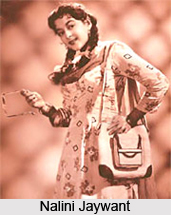 Nalini Jaywant
Nalini Jaywant
Nalini Jaywant was a child actress who went on to become one of India`s favourites. Nalini Jaywant was voted as the most photogenic actress by cameramen for a Filmfare poll. Her pixie face and charm captured hearts countrywide. Her singing career commenced with the film Radhika (1941), but the actress in her took precedence over the songstress. One film that brought forth both her talents was Mehboob Khan`s Bahen where she played the sister who dealt with the theme of incest and sang the giveaway song `Nahin khate hain bhaiya mera paan`. Films like Samadhi and Sangram in 1950, Raahi (1952), Munimji (1955), and Awaaz (1956) for Zia Sarhadi, and working with directors like Bimal Roy and Ramesh Saigal, helped her evolution as an actress. Her realism soon came to the fore, the restrained performances of the past giving way to a freer style as seen in Navketan`s hit suspense film, Kala Paani (1958). The film testified her talent where she co-starred with Dev Anand and Madhubala, both formidable screen presences.
Smita Patil
Smita Patil was a leading Bollywood actress from the 1970s to the 1980s in both Hindi and Marathi cinema. Her unconventional beauty and arresting screen presence made her the undying symbol of the new wave cinema in India. Born at Pune, Smita Patil worked as a news reader and was also an accomplished photographer when Shyam Benegal discovered her.
Shabana Azmi
Actress and star, Shabana Azmi is synonymous with riveting performances that lift the film right off celluloid, as real as life. Her finest roles have been in the genre known as New Indian Cinema (or Art house Cinema). This was not surprising considering her parentage. Her father, Kaifi Azmi was a highly respected poet and film lyricist and her mother, Shaukat Azmi was a noted stage actress.
Hema Malini
Hema Malini was born into a Brahmin Iyengar family. Hema first tried to enter films in 1964, but was rejected by a Tamil director Sridhar saying that she had no star appeal. However, she was adamant to make it big and hence entered Bollywood with her first movie Sapnon Ka Saudagar (1968), playing a young teen opposite the ageing superstar Raj Kapoor. Paired opposite Dev Anand in Johnny Mera Naam (1970) and with Dharmendra in Seeta aur Geeta (1972), Hema immediately became one of the industry`s favourite sought after stars. She was the top female star in Bollywood and became one of the reigning divas of the Bollywood film industry. Her fans called her `The Dream Girl` of Bollywood.
Jaya Bachchan
Jaya Bachchan, is a Bollywood actress. She is an alumna of the Film and Television Institute of India. Jaya is married to actor Amitabh Bachchan. Jaya was born to Indira and Taroon Kumar Bhaduri, writer, journalist and stage artist. She studied in St. Joseph`s Convent School, Bhopal. She started her career with a small role in Satyajit Ray`s Mahanagar at the age of 15. After initial success in her native West Bengal, she became a success after the movie Guddi in which she played a schoolgirl obsessed with film star Dharmendra. After this she moved to Mumbai and starred in many Hindi films.
The other famous Actress of Bollywood are Aishwarya Rai , Diana Hayden, Lara Dutta, Sushmita Sen, Yukta Mookhey, Priyanka Chopra, Divya Dutt, Kashmira Shah, Katrina Kaif, Aruna Irani, Gracy Singh, etc.
